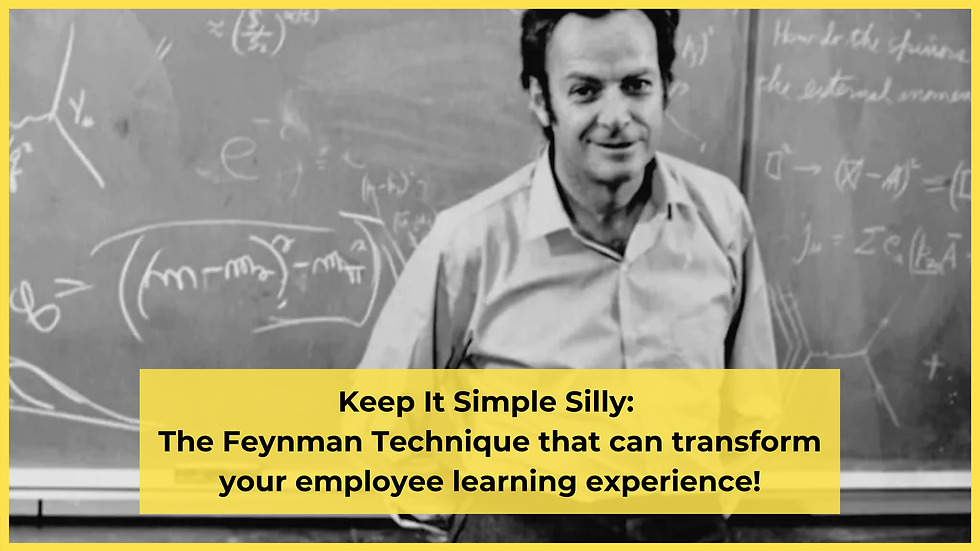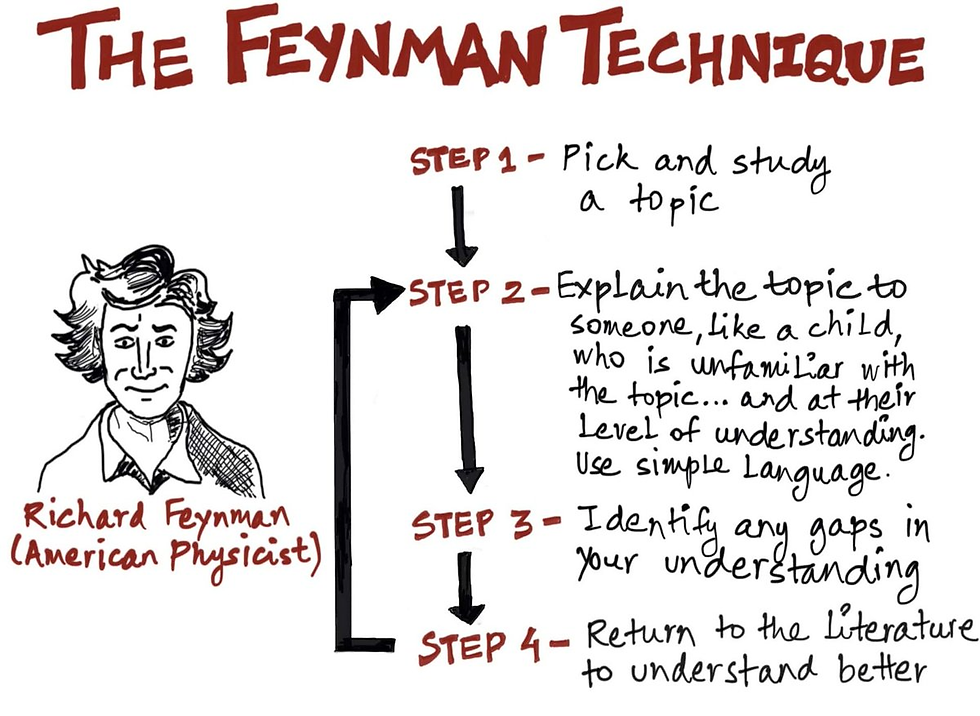Keep it Simple Silly; The Feynman Technique that can transform your employee learning experience!
- BHyve -

- Jul 7, 2021
- 4 min read

For those of us who have seen the movie ‘3 Idiots’, we still crack up every time we think of Raju answering his professor, how an induction motor started. Well, he wasn’t totally incorrect when he said that it started with a ‘Brrrrrrrrrr…’, but it was surely not what was expected of him!
As I sit here reminiscing the scene, I find it somewhat embarrassing to be able to relate with Raju! Knowing something, and being able to explain it in a clear, succinct way are two very different capabilities. In fact, this is the biggest fallacy of workplace learning. People confuse consumption with learning. They believe watching a video, hearing or reading some text, will make the information stick with them.
Look around your own workplace, and you can spot these people easily. They may say they’re an expert at sales, or a certified Six Sigma practitioner, with a number of certificates under their belt. But ask them for quick takeaways, and they lack the words to explain it.
In all probability, they haven’t retained a thing from that learning activity you put them through.
“The person who says he knows what he thinks but cannot express it usually does not know what he thinks.” – Mortimer Adler
Which brings us to a very important truth about Learning. Application of knowledge is fundamental to learning. A person who reads without pausing, to think and reflect, will never remember or know how to apply anything they read.
So what can you, as leaders in charge of learning, do, to augment learning outcomes of your organisation? Professor Feynman has some ideas!
Learning by breaking it down: The Feynman Way
A simple, yet extremely efficient method to build knowledge is the Feynman Technique. Richard Feynman, the Nobel Prize winning physicist is widely known as “The Great Explainer ”. He believed that to be able to grasp and apply any learning, the key is to make it as simple as possible. Simple enough that you could explain it to an eight-year-old!
As opposed to the practice of memorizing inattentively, this technique focuses on building knowledge effectively for the long run. It’s a simple 4 step process.

Pick a topic you want to understand
Pretend to explain the topic to a classroom, or an 8-year-old child
Identify the gaps – the places where you get stuck
Go back to the books, and understand it better
This process also takes care of another crucial learning barrier – the use of jargon. While explaining the concept to someone, you are forced to simplify terms, skip the jargon and get to the heart of the matter, in a structured manner.
If you get stuck, or are unable to simplify something, well, it’s time for you to revisit what you had learnt. Once you’ve completed breaking it down, it’d only be natural for the child to ask questions in return. Go on, until you’re satisfied. If you’re stuck again, repeat the process and complete the cycle.
Over the years, this technique has been leveraged by leaders like Bill Gates, to supercharge their learning efforts.
How is this helpful at my workplace?
Think about the countless hours of training your employees undergo. What are the chances information is coming in through an ear, and flowing out through the other?
What can you do to fix this? Think Peer Learning
Teaching is one of the most effective ways to retain, absorb and apply learning. It brings the feedback loop into the process from the start, where your learner’s first cues can help you understand if you’re in the right direction.
For organisations looking to truly empower their learners, Peer Learning is the silver bullet to ensure retention, sharing and application of learning. And now as organisations reshape as remote and distributed teams, the flow of information is not as easy as it used to be. Most of the knowledge sharing and training happens in the virtual mode, limiting one’s scope to gauge information, ask questions and ultimately learn from the experiences of others. But, why fear when BHyve is here?
BHyve’s peer matchmaking algorithms are designed to help your employees find peers to learn and collaborate with. By studying user needs, preferences and compatibility scores, BHyve can identify learning pairs that would help the tutor and learner in their growth journey.
BHyve’s hero feature, Buzzbox, enables employees to get their queries answered from trustworthy colleagues. Consider it like a one on one collaboration, but better. Employees connect with one another to sharpen their understanding about a particular topic or work process. Through the question asked, the employee answering it gets a chance to revisit the work-flow and update any gaps identified in the process. This way, they not only supercharge their own learning, but also of their colleagues!
The Feynman Technique is a uniquely effective method of maximising learning outcomes at your organisations and BHyve can help you materialize it in your workplace. BHyve’s user flows create a structure where knowledge sharing and feedback loops work on autopilot, and knowledge is broken down to its simplest and imparted in a way that the receiver doesn’t forget.
To make your organisation a true learning organisation, connect with us and schedule a demo of BHyve



Comments